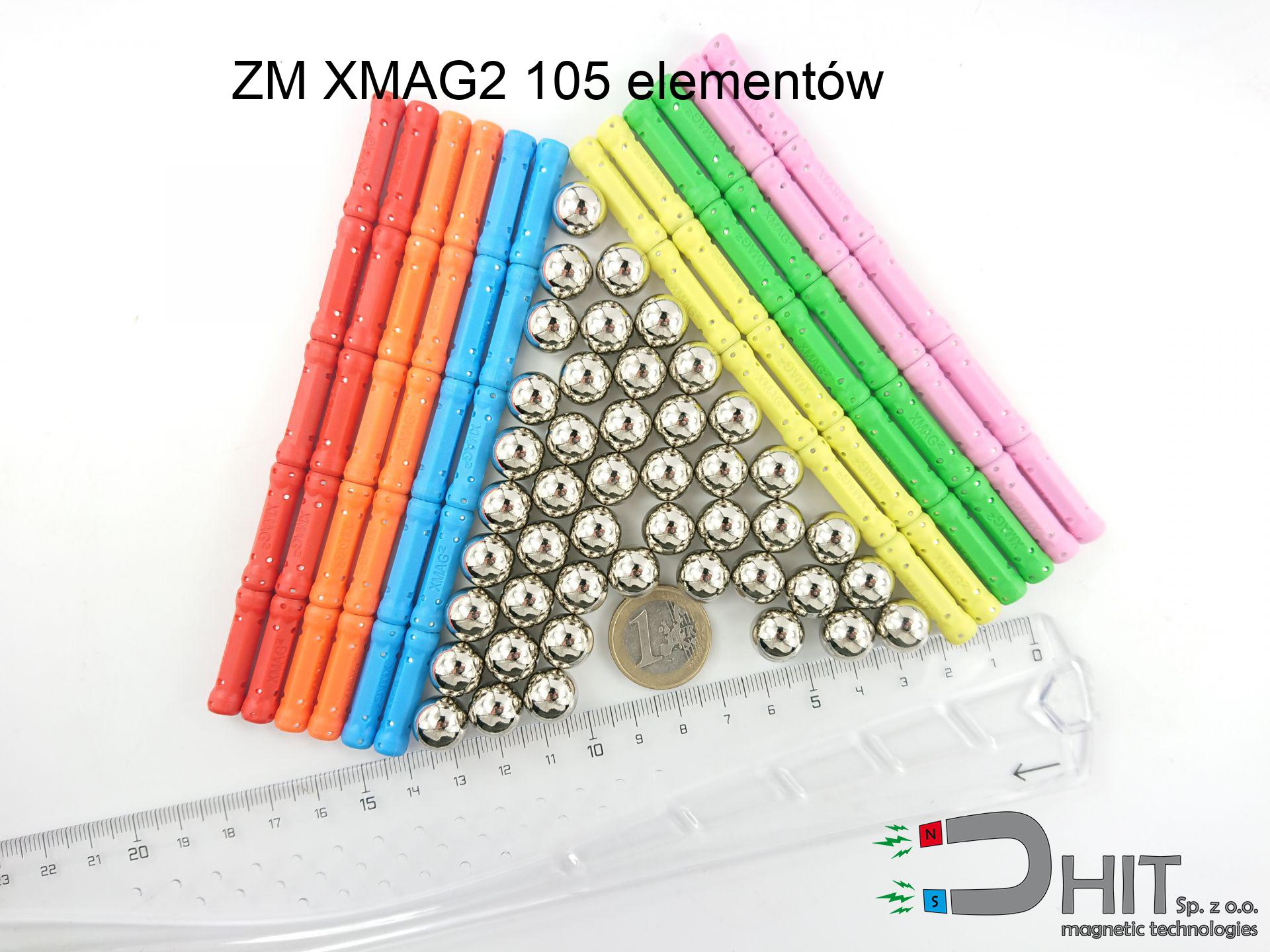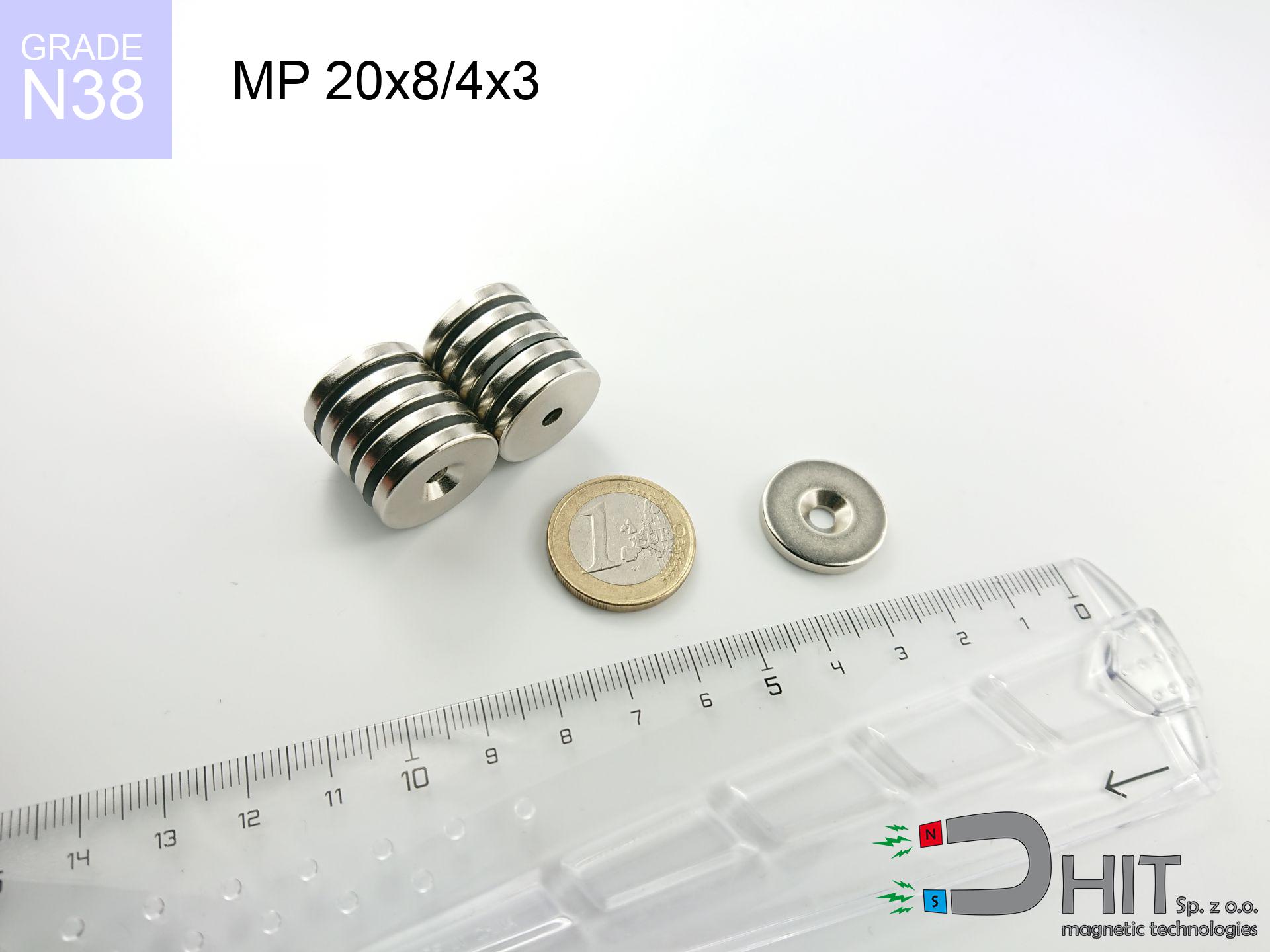SM 32x300 [2xM8] / N42 - magnetic separator
magnetic separator
Catalog no 130300
GTIN/EAN: 5906301812937
Diameter Ø
32 mm [±1 mm]
Height
300 mm [±1 mm]
Weight
1610 g
Magnetic Flux
~ 8 000 Gauss [±5%]
897.90 ZŁ with VAT / pcs + price for transport
730.00 ZŁ net + 23% VAT / pcs
bulk discounts:
Need more?
Call us now
+48 888 99 98 98
if you prefer let us know using
our online form
our website.
Lifting power and form of magnets can be analyzed using our
modular calculator.
Same-day processing for orders placed before 14:00.
Product card - SM 32x300 [2xM8] / N42 - magnetic separator
Specification / characteristics - SM 32x300 [2xM8] / N42 - magnetic separator
| properties | values |
|---|---|
| Cat. no. | 130300 |
| GTIN/EAN | 5906301812937 |
| Production/Distribution | Dhit sp. z o.o. |
| Country of origin | Poland / China / Germany |
| Customs code | 85059029 |
| Diameter Ø | 32 mm [±1 mm] |
| Height | 300 mm [±1 mm] |
| Weight | 1610 g |
| Material Type | Stainless steel AISI 304 / A2 |
| Magnetic Flux | ~ 8 000 Gauss [±5%] |
| Size/Mount Quantity | 2xM8 |
| Polarity | circumferential - 11 poles |
| Casing Tube Thickness | 1 mm |
| Manufacturing Tolerance | ±1 mm |
Magnetic properties of material N42
| properties | values | units |
|---|---|---|
| remenance Br [min. - max.] ? | 12.9-13.2 | kGs |
| remenance Br [min. - max.] ? | 1290-1320 | mT |
| coercivity bHc ? | 10.8-12.0 | kOe |
| coercivity bHc ? | 860-955 | kA/m |
| actual internal force iHc | ≥ 12 | kOe |
| actual internal force iHc | ≥ 955 | kA/m |
| energy density [min. - max.] ? | 40-42 | BH max MGOe |
| energy density [min. - max.] ? | 318-334 | BH max KJ/m |
| max. temperature ? | ≤ 80 | °C |
Physical properties of sintered neodymium magnets Nd2Fe14B at 20°C
| properties | values | units |
|---|---|---|
| Vickers hardness | ≥550 | Hv |
| Density | ≥7.4 | g/cm3 |
| Curie Temperature TC | 312 - 380 | °C |
| Curie Temperature TF | 593 - 716 | °F |
| Specific resistance | 150 | μΩ⋅cm |
| Bending strength | 250 | MPa |
| Compressive strength | 1000~1100 | MPa |
| Thermal expansion parallel (∥) to orientation (M) | (3-4) x 10-6 | °C-1 |
| Thermal expansion perpendicular (⊥) to orientation (M) | -(1-3) x 10-6 | °C-1 |
| Young's modulus | 1.7 x 104 | kg/mm² |
Table 1: Rod construction
SM 32x300 [2xM8] / N42
| Parameter | Value | Description / Unit |
|---|---|---|
| Diameter (Ø) | 32 | mm |
| Total length | 300 | mm (L) |
| Active length | 264 | mm |
| Section count | 11 | modules |
| Dead zone | 36 | mm (2x 18mm starter) |
| Weight (est.) | ~1834 | g |
| Active area | 265 | cm² (Area) |
| Housing material | AISI 304 | 1.4301 (Inox) |
| Surface finish | Ra < 0.8 µm | Polished |
| Temp. class | 80°C | Standard (N) |
| Force loss (at max °C) | -12.8% | Reversible loss (physics) |
| Force (calculated) | 26.2 | kg (theor.) |
| Induction (surface) | ~8 000 | Gauss (Max) |
Chart 2: Field profile (11 sections)
Chart 3: Temperature performance
Chemical composition
| iron (Fe) | 64% – 68% |
| neodymium (Nd) | 29% – 32% |
| boron (B) | 1.1% – 1.2% |
| dysprosium (Dy) | 0.5% – 2.0% |
| coating (Ni-Cu-Ni) | < 0.05% |
Ecology and recycling (GPSR)
| recyclability (EoL) | 100% |
| recycled raw materials | ~10% (pre-cons) |
| carbon footprint | low / zredukowany |
| waste code (EWC) | 16 02 16 |
See more deals
Strengths and weaknesses of rare earth magnets.
Pros
- Their magnetic field is durable, and after around ten years it decreases only by ~1% (theoretically),
- They are resistant to demagnetization induced by presence of other magnetic fields,
- By applying a smooth layer of silver, the element presents an nice look,
- The surface of neodymium magnets generates a unique magnetic field – this is one of their assets,
- Due to their durability and thermal resistance, neodymium magnets are capable of operate (depending on the shape) even at high temperatures reaching 230°C or more...
- Thanks to the potential of precise shaping and adaptation to custom needs, NdFeB magnets can be created in a wide range of geometric configurations, which amplifies use scope,
- Versatile presence in future technologies – they serve a role in HDD drives, brushless drives, medical equipment, as well as multitasking production systems.
- Relatively small size with high pulling force – neodymium magnets offer impressive pulling force in compact dimensions, which enables their usage in miniature devices
Disadvantages
- Brittleness is one of their disadvantages. Upon strong impact they can break. We recommend keeping them in a steel housing, which not only protects them against impacts but also increases their durability
- Neodymium magnets decrease their power under the influence of heating. As soon as 80°C is exceeded, many of them start losing their force. Therefore, we recommend our special magnets marked [AH], which maintain durability even at temperatures up to 230°C
- Due to the susceptibility of magnets to corrosion in a humid environment, we advise using waterproof magnets made of rubber, plastic or other material resistant to moisture, when using outdoors
- We recommend a housing - magnetic mechanism, due to difficulties in realizing threads inside the magnet and complicated shapes.
- Potential hazard related to microscopic parts of magnets are risky, if swallowed, which gains importance in the context of child health protection. Furthermore, tiny parts of these magnets can complicate diagnosis medical when they are in the body.
- Due to expensive raw materials, their price exceeds standard values,
Holding force characteristics
Magnetic strength at its maximum – what it depends on?
- on a plate made of structural steel, effectively closing the magnetic flux
- whose transverse dimension is min. 10 mm
- with a plane cleaned and smooth
- with zero gap (without impurities)
- under axial force direction (90-degree angle)
- at room temperature
Lifting capacity in real conditions – factors
- Gap between surfaces – even a fraction of a millimeter of separation (caused e.g. by veneer or dirt) significantly weakens the magnet efficiency, often by half at just 0.5 mm.
- Force direction – note that the magnet has greatest strength perpendicularly. Under sliding down, the holding force drops drastically, often to levels of 20-30% of the maximum value.
- Base massiveness – too thin steel does not accept the full field, causing part of the flux to be lost to the other side.
- Metal type – different alloys attracts identically. High carbon content weaken the interaction with the magnet.
- Surface quality – the smoother and more polished the surface, the larger the contact zone and stronger the hold. Unevenness creates an air distance.
- Heat – neodymium magnets have a negative temperature coefficient. At higher temperatures they are weaker, and at low temperatures gain strength (up to a certain limit).
Lifting capacity was determined by applying a smooth steel plate of optimal thickness (min. 20 mm), under perpendicular detachment force, whereas under shearing force the load capacity is reduced by as much as 5 times. Additionally, even a small distance between the magnet and the plate decreases the lifting capacity.
Precautions when working with neodymium magnets
Beware of splinters
Watch out for shards. Magnets can fracture upon violent connection, ejecting shards into the air. We recommend safety glasses.
Life threat
Life threat: Neodymium magnets can deactivate heart devices and defibrillators. Stay away if you have electronic implants.
Data carriers
Data protection: Neodymium magnets can damage data carriers and delicate electronics (pacemakers, hearing aids, mechanical watches).
Keep away from electronics
Be aware: rare earth magnets generate a field that interferes with precision electronics. Keep a safe distance from your mobile, device, and GPS.
Serious injuries
Big blocks can break fingers in a fraction of a second. Do not put your hand between two strong magnets.
Adults only
NdFeB magnets are not suitable for play. Eating several magnets may result in them attracting across intestines, which constitutes a severe health hazard and requires immediate surgery.
Permanent damage
Monitor thermal conditions. Heating the magnet to high heat will destroy its magnetic structure and pulling force.
Warning for allergy sufferers
Some people have a contact allergy to Ni, which is the common plating for neodymium magnets. Prolonged contact may cause an allergic reaction. We suggest wear protective gloves.
Combustion hazard
Fire warning: Rare earth powder is explosive. Avoid machining magnets in home conditions as this may cause fire.
Immense force
Exercise caution. Rare earth magnets attract from a long distance and connect with huge force, often quicker than you can move away.

![Separation magnetic rod SM 32x300 [2xM8] / N42 Separation magnetic rod SM 32x300 [2xM8] / N42](https://cdn3.dhit.pl/graphics/banners/magnet.webp)
![SM 32x300 [2xM8] / N42 - magnetic separator](https://cdn3.dhit.pl/graphics/products/sm-32x300-2xm8-pel.jpg)

![SM 18x200 [2xM5] / N42 - magnetic separator SM 18x200 [2xM5] / N42 - magnetic separator](https://cdn3.dhit.pl/graphics/products/sm-18x200-2xm5-gig.jpg)
![UMH 32x8x46 [M6] / N38 - magnetic holder with hook UMH 32x8x46 [M6] / N38 - magnetic holder with hook](https://cdn3.dhit.pl/graphics/products/umh-32x8x46-m6-xov.jpg)


